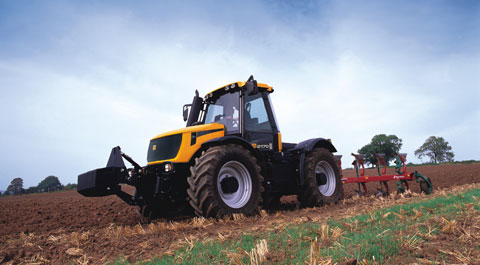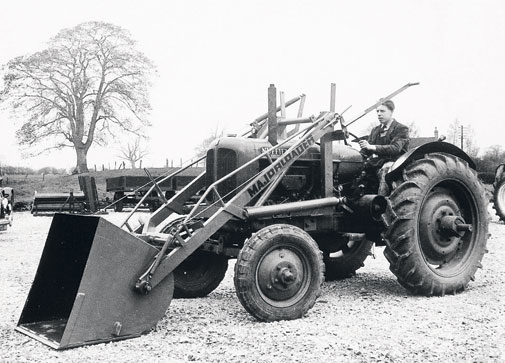Best of British: JCB

In the latest in our series on British farm machinery makers, Michael Williams talks to tractor and handler maker JCB
Bamford used to be one of Britain’s biggest and best-known farm machinery companies, so it was not surprising that young Joseph Cyril Bamford planned a career in the family-owned business in the late 1930s.
Unfortunately others at the Uttoxeter, Staffordshire company were less than enthusiastic about their newest recruit, so Joseph left the company.
He worked briefly for another engineering firm and then, after serving in the war, started his own business in 1945 making farm machinery in Uttoxeter.
The company, later named JCB after its founder’s initials, started making trailers. Only three trailers were completed during the first year, built with casual and part-time labour because the first full-time employees were not recruited until 1947. Tractor-mounted loaders were added to the range two years later, followed by the first JCB backhoe loader in 1954.
There were other products, including half-track conversion kits for tractors, but it was the backhoe loader’s success that provided much of the growth that turned JCB from a small farm machinery company into one of the world’s leading construction equipment firms.
The rapid expansion, which coincided with the decline and eventual closure of the old Bamford concern, was also helped by the development of other products including the first Loadall telescopic loader in 1955.
JCB is now the world leader in telehandler sales and the Loadall’s success on farms (as well as for construction and industrial work) helped maintain the company’s position in the agricultural machinery market.

Work on the next big farm equipment project started in 1986 when JCB engineers began designing the first models in the Fastrac tractor range. Many were surprised when JCB started making tractors at a time when some manufacturers were leaving the over-crowded industry, but it was typical of JCB’s ability for doing things differently.
The Fastrac was – and still is – no ordinary tractor and the project had the full support of Joseph Bamford’s eldest son Anthony, now Sir Anthony. It was also backed by a £12m development budget.
The new Fastrac was an ambitious project. With 50mph road speeds on earlier versions and up to 24t gross weight when pulling a loaded trailer, the tractors were fitted with air operated, truck-type disc brakes front and rear. JCB was also the first company to fit anti-lock brakes on a farm tractor.
The design included front and rear suspension with a self-levelling action to compensate for weight on the rear linkage, and four-wheel drive using equal-diameter wheels for efficient traction.
The first 125 and 145hp Fastrac models were announced in December 1990, and their performance and unconventional design features attracted enormous interest in the UK and overseas. Fastracs, which now offer power outputs from 165 to 280hp, together with Loadalls and other equipment sold for farming, are now handled by JCB Agriculture, a subsidiary of the family-owned JCB company.
COMPANY FACTSCompany: JCBHQ: Uttoxeter, StaffordshireOwned by: Bamford familyEmployees: 7000-plus worldwideAnnual turnover: £2bnPrincipal products: construction industry machinery plus agricultural equipment such as Fastrac tractors, Loadall telescopic handlers and other materials handling machinery. |
|---|

